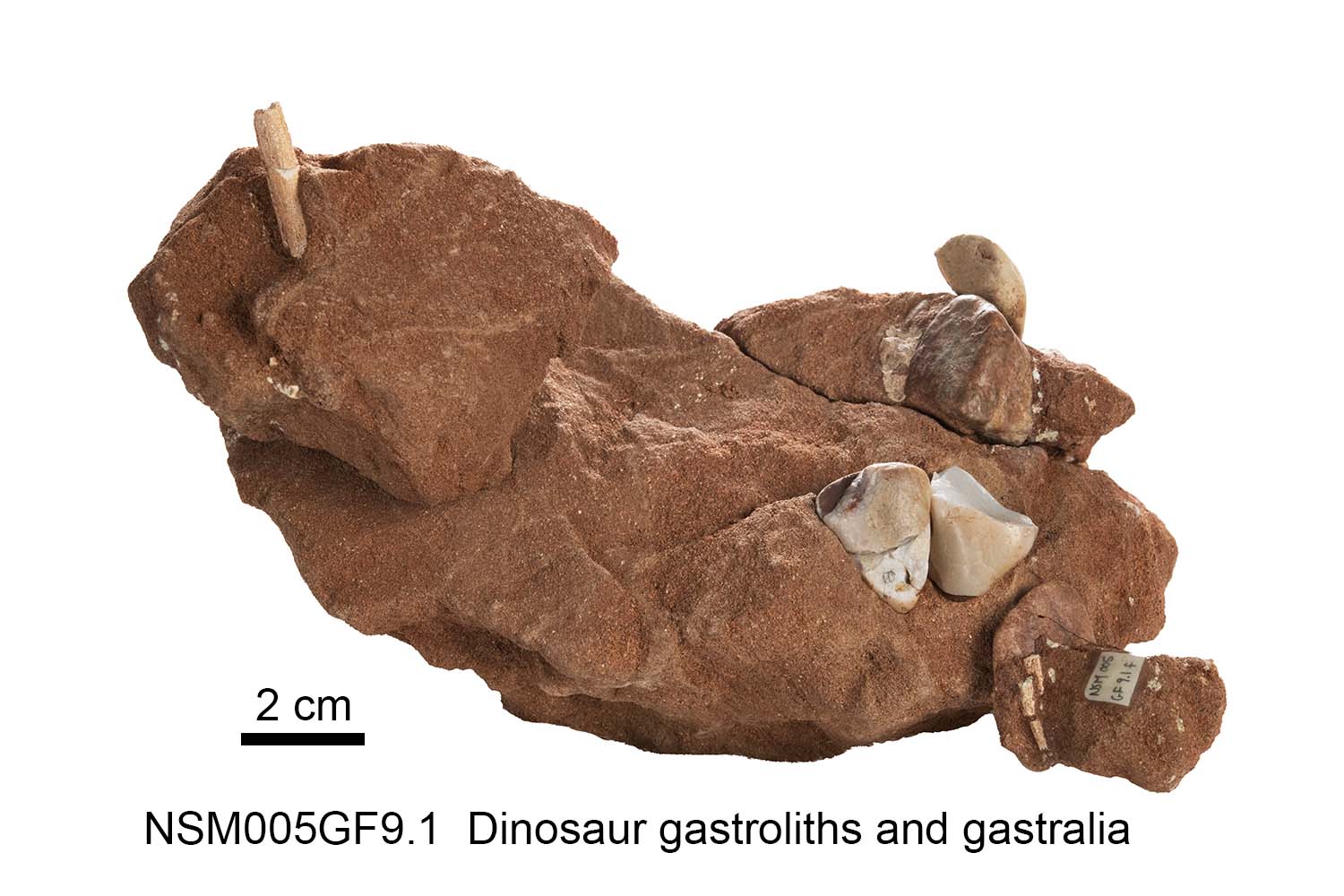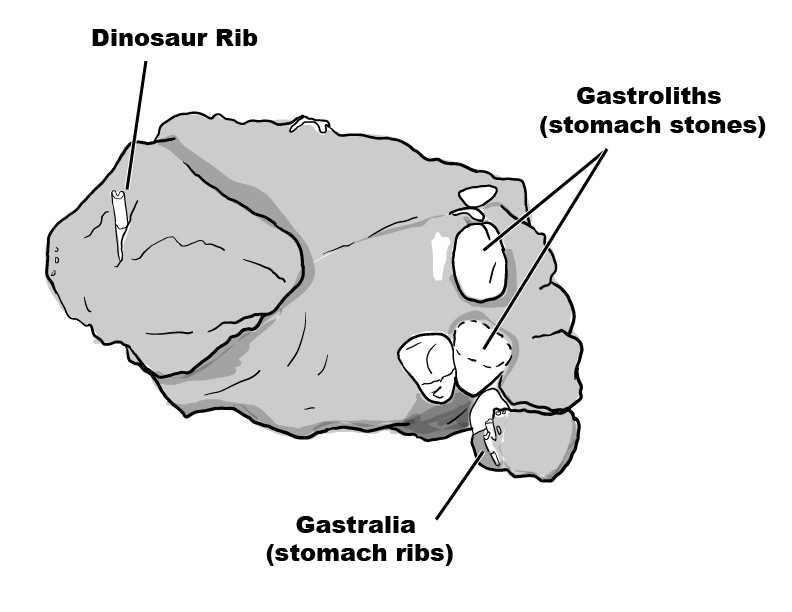Dinosaurs Collected Quartz Rocks

Many types of dinosaurs did not chew their food - but used their sharp teeth to cut large pieces of food, which they swallowed without chewing. These dinosaurs used powerful stomach muscles and stones (gastroliths) to grind up their food. We can see many types of birds and other animals still doing this today.
Dinosaurs Liked Quartz
Did dinosaurs learn? Did they go looking for quartz pebbles? Or, did quartz pebbles just last longer in the stomach, as softer rocks broke down?
For whatever reason, many dinosaur gastroliths turn out to be quartz. Quartz is a hard mineral, harder than stainless steel, and a very common mineral. So it is a great choice for a gastrolith.
Stomach Ribs
Dinosaurs also had special 'stomach ribs' called "gastralia". These very thin bones look like ribs but are much smaller and often with grooves where they overlapped. They were located in the abdomen (stomach) area of the dinosaur, like a bony six-pack stomach. The mesh like gastralia worked as a unit, providing protection and support of the stomach and intestines but also improved breathing.

A Special Discovery
Neil Shubin was a graduate student at Harvard University in 1986 when he found a dinosaur skeleton in Nova Scotia that included at least seven gastroliths (quartz pebbles) associated with gastralia (stomach ribs). This discovery and other fossils found nearby made international news - and eventually lead to establishing the Fundy Geological Museum in Parrsboro, Nova Scotia.
The identity of the dinosaur with gastroliths is still uncertain, but appears to be an early long-necked dinosaur (sauropodomorph) or a theropod dinosaur (like Coelophysis or Syntarsus). The bones were crushed and deformed by ancient earthquakes, making it difficult to identify the type of dinosaur. Research of these and other dinosaurs continues at the Fundy Geological Museum.
Just think - 200 million years ago, dinosaurs were roaming the shores of an ancient Fundy rift valley, looking for rocks to help with their digestion.
Dinosaur rock-hounds!
On Display
You can see the 200 million year old dinosaur gastoliths in the Dinosaur Exploration exhibit, opening February 2, 2024.